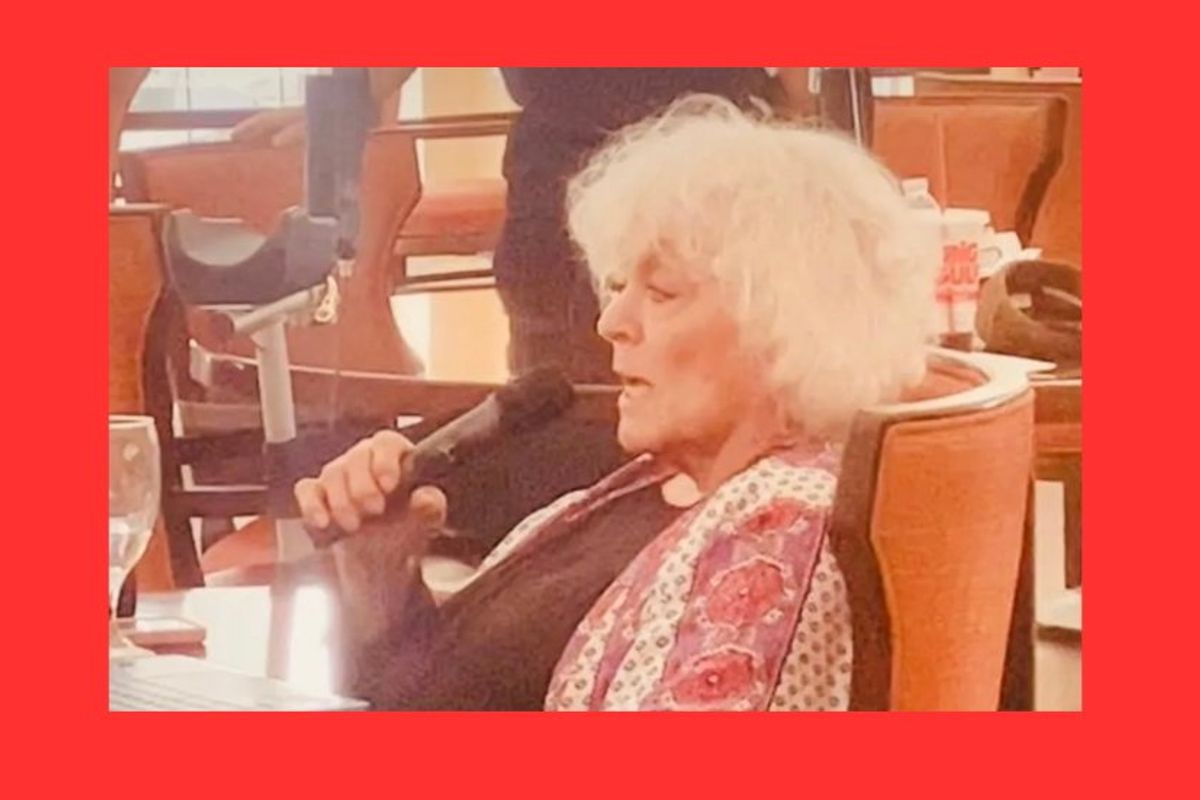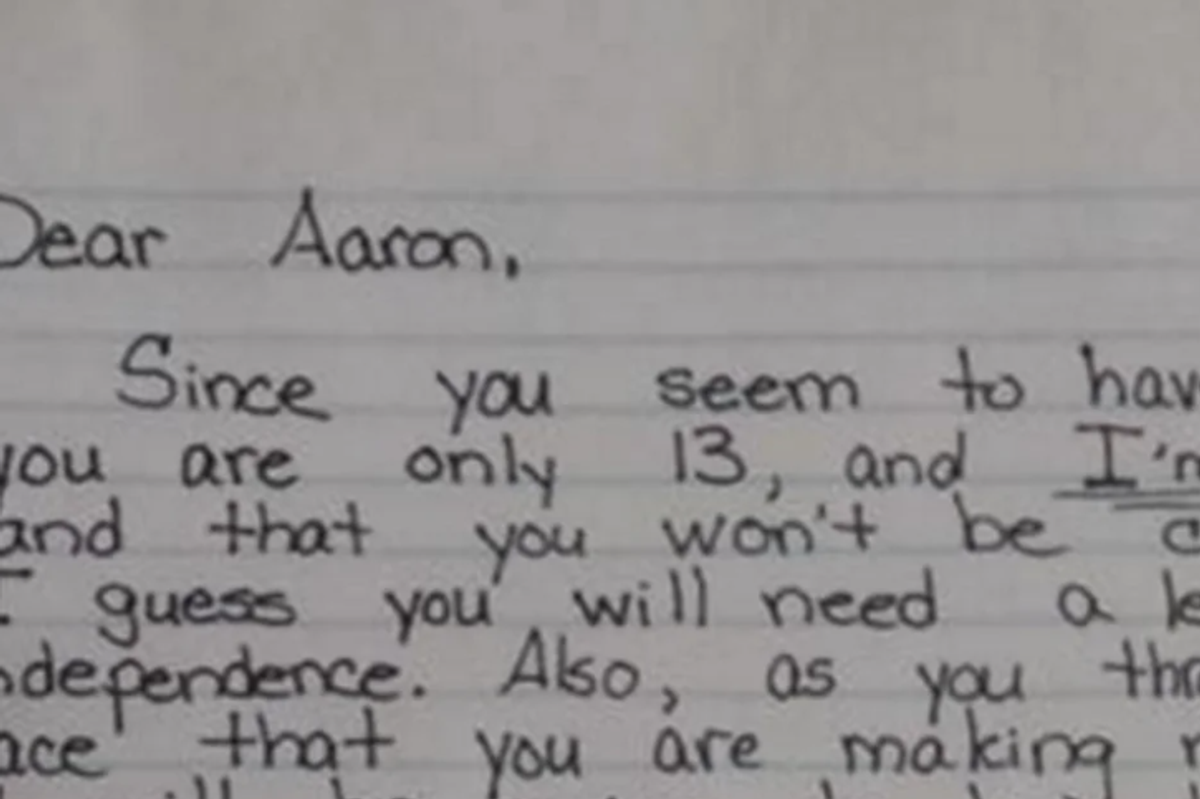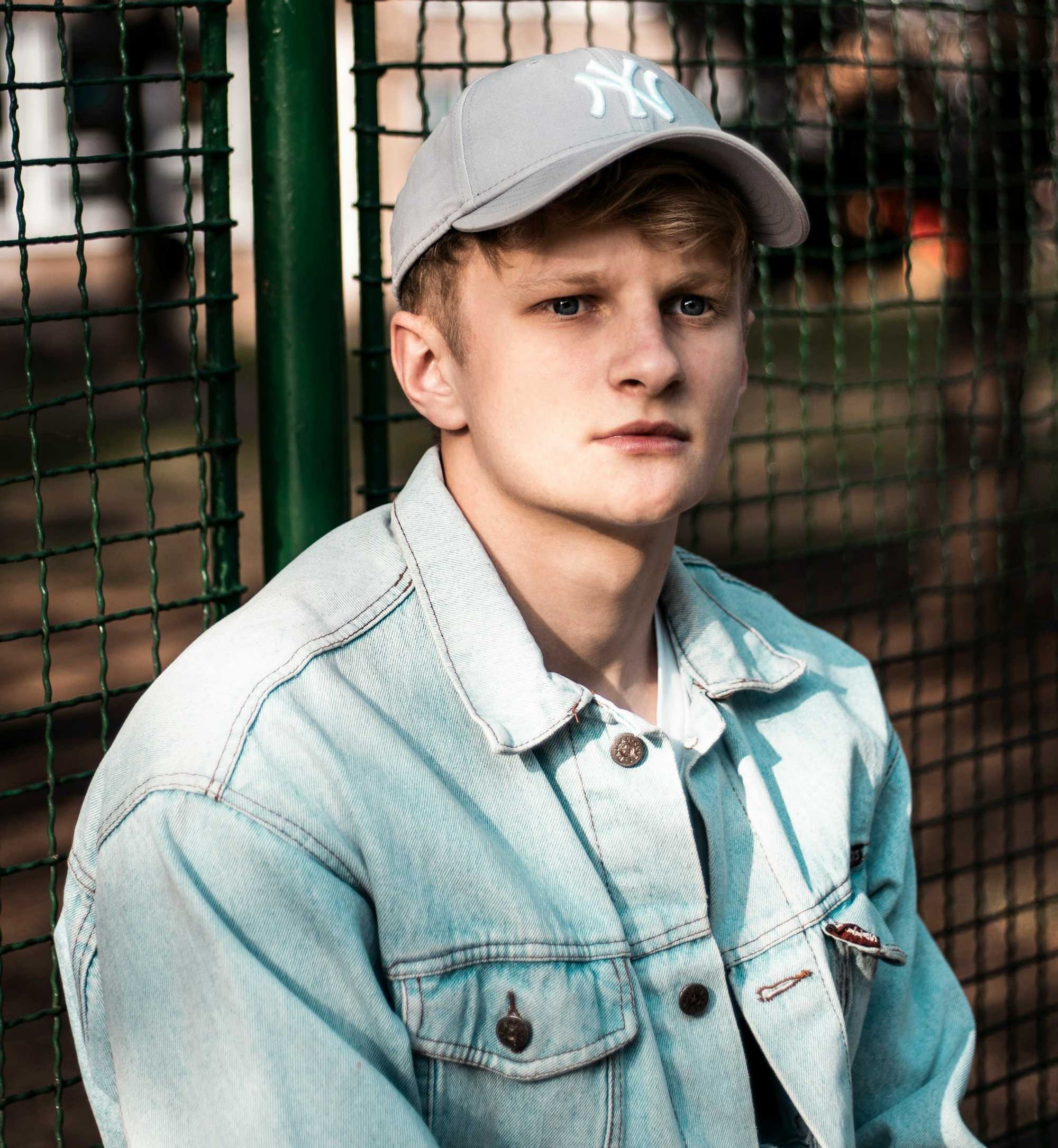They tested a seat so people with disabilities could ride a camel. Here's how it went.
On edge of the Sahara Dunes, a few miles outside of the Moroccan town of Merzouga, a camel named Omalise seems to suspect something is up.
On her back is a bulky contraption — a tall fabric seat held in place by metal piping and tied down with a tangle of unfamiliar straps.
Image by Eric March via Morocco Accessible Travel Consultants.
It doesn't hurt, but it's not her usual saddle, and it's definitely not heavy enough to be a rider. Unclear what the attentive crowd of rapidly chattering humans around her wants her to do, she tries to stand up.
Within milliseconds, three trainers hustle over to coax the confused camel back to the ground.
"Of course, right now, the camel is a bit uncomfortable with the situation, but she’ll get used to it," says Mbark, Omalise's handler, through a translator. Mbark has lived semi-nomadically around the pack animals his entire life. For the past 12 years, he's worked in the country's booming tourism industry, facilitating camel excursions for visitors who want an up-close-and-personal introduction to the desert.
Today, he's spending his evening preparing his impatient camel to give tourists with disabilities the opportunity to experience the type of Hollywood epic-worthy trek through the desert sands they imagine when they dream of his home country.
Riding a camel has long been out of reach for travelers who lack full mobility, but Morocco Accessible Travel Consultants (MAT) hopes to change that with the advent of a custom saddle that mimics the action of a wheelchair on the animal's back.
The seat is the brainchild of Erik Neufeld and Jeremy Schmidt, who purchased the tour company in 2016 with the goal of providing their disabled clients access to the country's full range of historic sites, restaurants, markets, and natural attractions.
Getting a client onto a camel and over the dunes (a "classic Morocco" experience, according to the pair) is a problem that has perplexed them from day one — and one they believe they're finally getting close to solving.
Omalise. Image by Eric March via Morocco Accessible Travel Consultants.
"There were other parts of Morocco where we were like, 'Yeah, we can see how this will work accessibility-wise,' but the desert, that was constantly, 'How do we make this work?'" Neufeld explains.
In a few weeks, a colleague from Eastern Europe who studies the effects of equipment on a person's body is coming to test the saddle. To prepare for her visit, Neufeld volunteered to be the saddle's first human guinea pig.
In an effort to meet the deadline, Neufeld, an aircraft mechanic by training, is working furiously with Mbark, a local welder, and Schmidt, a physical therapist by training to make sure it can support a disabled rider without discomforting or harming accommodating animals like Omalise.
An early stage version of the seat. Photo by Erik Neufeld.
"We have Moroccans, Americans, Eastern Europeans all working together to make it possible for someone to experience the desert in a unique way," he says.
For the estimated 1 billion people worldwide living with a disability, traveling the globe is slowly becoming easier.
Beginning in 2014, the United Nations World Tourism Organization began holding conferences on accessible travel, establishing a set of guidelines and goals for nations to make their iconic sites more hospitable for disabled tourists.
In places like much of Morocco, where accessible infrastructure often coexists with ancient buildings, narrow streets, and impassable staircases, companies like MAT work to fill in the gaps.
"If we advertise something as accessible, people have certain expectations of what that is," Neufeld says. The company designs itineraries for its clients to maximize the amount they can accomplish independently — and organizes transportation and accommodation around their particular physical needs.
The camel chair is an ambitious step beyond MAT's usual expertise. The centerpiece of the device is an articulating seat that adjusts with the rider's body. Moveable armrests allowing for simplified transfer between wheelchair and seat, and a custom frame allows the rider to slide neatly into a traditional saddle.
Ultimately, Neufeld and Schmidt hope to make the chair available to Moroccan children with disabilities as well as their tourist clients, allowing many to experience the Sahara for the first time.
Still, it's a work in progress.
On a second try, Neufeld attempts to hoist himself into the saddle from a raised platform.
In a rush to climb aboard, the platform tips under his weight and Omalise, spooked by the activity, stands up again.
Image by Eric March via Morocco Accessible Travel Consultants.
After wrestling her down, Mbark and his team work to calm the anxious camel, tying her at the knee to prevent further surprises.
"If [Neufeld] falls, no one cares, but if our client falls, that’s a bigger issue," Schmidt notes, wryly.
Before finding MAT, Jane Romm, a teacher from New York, was skeptical of taking any sort of organized tour of Morocco.
Like many independent travelers, she prefers setting her own schedule to traveling on a set guided itinerary.
Since her husband was diagnosed with multiple sclerosis, she and her family have continued to travel the world, developing new strategies along the way.
"My sons and I, we’re like a well-oiled machine the way we handle the wheelchair," Still, her husband's declining mobility made exploring the North African country on their own a daunting thought.
Ultimately, having a trained physical therapist on staff at MAT, and a driver who refused to leave her husband in the van once, even spending an evening running from restaurant to restaurant attempting to locate an accessible restroom — confirmed the value of a trip designed around their specific needs.
Jane Romm (C) and family in Morocco. Photo by Jane Romm.
"We looked at each other and were like, 'Why didn’t we ever do this before?" she explains. "What’s wrong with us? Why are we trying to conquer the world ourselves?'"
On his third attempt to test the chair, Neufeld finally slides from the platform into the seat. The handlers release the ropes and Omalise stands on cue.
As she trots nonchalantly along the sand, Neufeld rocks back and forth in the seat, trying not to engage the muscles in his core — simulating the potential effect of the ride on a client who lacks upper body strength.
Image by Eric March via Morocco Accessible Travel Consultants.
He sways unsteadily, like an exhausted club-goer who's had one too many, as Mbark and crew spot him from below. It's hard to watch. But he finishes the ride without falling.
For Neufeld, the test run was a "wild cocktail of exhilaration mixed with some anxiety" — a promising start, though a harrowing one.
"In many ways you could compare it to being on a roller coaster," he says.
Meanwhile, Mbark, observing from the ground, continued to noodle on prospective modifications.
"Because we have a new saddle here, it’s very common with new saddles that they don’t have good balance," he explains. "Once we figure out the balance issues, it will work great."
The crew hopes that adding more ballast to stabilize the seat, while making its metal frame less rigid and more adaptable to the fluid motion of the camel, will steady the chair.
After an exhausting hour of testing, Omalise sets off toward home on her own, as Mbark speeds off along a different route on his motorbike.
Neufeld, meanwhile, plans to make some modifications in the morning. Until then, he will continue risking his own body to make sure the project remains on schedule.
For those who live abroad, traveling to Morocco isn't an essential experience, and it's certainly not one available to everyone with a disability.
For those lucky enough to get the opportunity — Schmidt and Neufeld are working to provide far more than access ramps and bars on the toilet for travelers to a place they feel fortunate to call home.
"To go see the desert, to go see the ocean, to see the mountains [in the U.S.], you’re talking about multiple days and plane trips," Schmidt says. "Here you can do it all in the same week."
Riding a camel might not be something most people need to do. But life is more than things you need to do. So, yes, a few hours bopping around the desert is not necessarily going to make or break anyone's life. But for travelers with disabilities, a working accessible saddle could open the world just a little bit wider.
With a little luck, the camels will learn to see it that way too.




 Family moving into a new home.
Family moving into a new home.  Driving Road Trip GIF by Rosen Hotels & Resorts
Driving Road Trip GIF by Rosen Hotels & Resorts 
 Carole and her band mates.Carole Wade
Carole and her band mates.Carole Wade
 "
"
 Teaching teenagers about real-life consequences isn't easy. Photo by
Teaching teenagers about real-life consequences isn't easy. Photo by  Kids need to be reminded, sometimes, of how much they still depend on mom. Photo by
Kids need to be reminded, sometimes, of how much they still depend on mom. Photo by